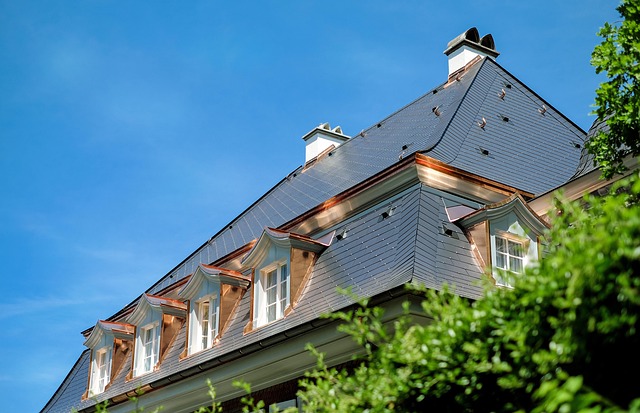Urban green roofs are transforming cityscapes with their eco-friendly benefits. These ecosystems on flat rooftops combat heat islands, reduce energy needs for cooling, act as natural rainwater filters, and promote biodiversity. With adaptable designs and native plant blends, they enhance air quality, extend roof lifespans, and offer long-term savings. Structural assessments, drainage media selection, and climate-suitable plants are key to their success. Global examples like Toronto and Berlin showcase their effectiveness in energy reduction and stormwater management, making them vital elements of modern eco-urban planning.
Discover the transformative power of urban green roofs – a harmonious blend of nature and architecture that’s revolutionizing eco-friendly homes. This article explores the conceptual foundations, diverse advantages, and meticulous design considerations behind these living landscapes. From key components to captivating case studies, we delve into the successful integration of urban green roofs, showcasing their profound impact on both environmental sustainability and aesthetic appeal.
- Understanding Urban Green Roofs: A Conceptual Overview
- Benefits of Implementing Living Roofs in Eco-Friendly Homes
- Key Components and Design Considerations for Successful Execution
- Case Studies: Real-World Examples of Urban Green Roofs in Action
Understanding Urban Green Roofs: A Conceptual Overview
Urban green roofs are a harmonious blend of nature and architecture, designed to enhance the environmental sustainability of buildings. This innovative concept involves the transformation of traditional flat rooftops into vibrant ecosystems capable of supporting plant life. By integrating vegetation into urban landscapes, these roofs offer numerous ecological benefits. They help mitigate the urban heat island effect by providing natural insulation, reducing the need for energy-intensive cooling systems. Furthermore, green roofs act as natural filters, absorbing rainwater and improving drainage, thereby alleviating the strain on municipal water systems.
The design of urban green roofs varies, ranging from extensive systems with low-maintenance plants to intensive roofs that can support walking areas and diverse flora. This versatility allows homeowners, developers, and architects to incorporate green roofs into various structures, from residential buildings to commercial complexes. As cities continue to grow, embracing urban green roofs is a step towards creating more sustainable and livable environments, showcasing a harmonious relationship between human habitats and the natural world.
Benefits of Implementing Living Roofs in Eco-Friendly Homes
Implementing living roofs, or urban green roofs, in eco-friendly homes offers a multitude of benefits that extend far beyond aesthetics. These roofs serve as vibrant ecosystems that support biodiversity by providing habitats for various plant and animal species, enhancing local bird populations, and promoting the natural control of pests. The environmental advantages are substantial, as living roofs help to mitigate the urban heat island effect, reducing energy consumption for cooling, and absorbing rainwater, thereby decreasing stormwater runoff and easing pressure on sewer systems.
Moreover, these innovative designs contribute to improved air quality by filtering pollutants and releasing oxygen, creating a healthier living environment. Beyond their ecological value, living roofs add insulating properties to buildings, which can lead to significant energy savings. They also offer extended roof lifespans due to their protective layers against extreme weather conditions, ultimately reducing waste and construction costs in the long run.
Key Components and Design Considerations for Successful Execution
When designing and implementing urban green roofs, several key components and considerations come into play for a successful execution. Firstly, the structural integrity of the building must be evaluated to ensure it can support the additional weight of the roof system. This includes assessing the load-bearing capacity and possibly reinforcing existing structures to meet the demands of the eco-friendly design.
The next crucial step is selecting an appropriate growing medium that provides adequate drainage while retaining enough moisture for plant growth. Combining this with a carefully curated mix of native plants suited to the local climate optimizes water efficiency, reduces maintenance needs, and promotes biodiversity—essential elements for a thriving urban green roof. Additionally, designing for both aesthetic appeal and functionality involves considering factors like sun exposure, wind patterns, and the overall integration of the green roof into the building’s architecture.
Case Studies: Real-World Examples of Urban Green Roofs in Action
In urban areas across the globe, urban green roofs are transforming the way we think about home design and environmental sustainability. These living structures, designed to mimic nature, offer a wealth of benefits beyond aesthetic appeal. From reducing the urban heat island effect to providing habitats for local wildlife, urban green roofs are proving their worth as essential components of eco-friendly cities.
Case studies from major metropolitan areas worldwide showcase the transformative power of these green spaces on rooftops. For instance, Toronto’s Eco-Roof Project has led to a significant decrease in building energy consumption, while Berlin’s Green Roof Initiative has not only beautified the cityscape but also helped mitigate stormwater runoff. These real-world examples demonstrate that urban green roofs are not just concepts for the future; they are viable and impactful solutions for present-day urban planning.
Urban green roofs offer a sustainable solution for eco-friendly homes, providing numerous environmental benefits. By integrating vegetation into roof designs, these structures mitigate the urban heat island effect, improve insulation, and enhance biodiversity. The article has explored key aspects, from the conceptual understanding to practical design considerations and real-world case studies. Implementing living roofs not only contributes to a greener cityscape but also creates resilient and aesthetically pleasing habitats that harmonize with nature. As the movement towards eco-friendly living gains momentum, urban green roofs are poised to become an essential element in shaping sustainable cities of the future.
